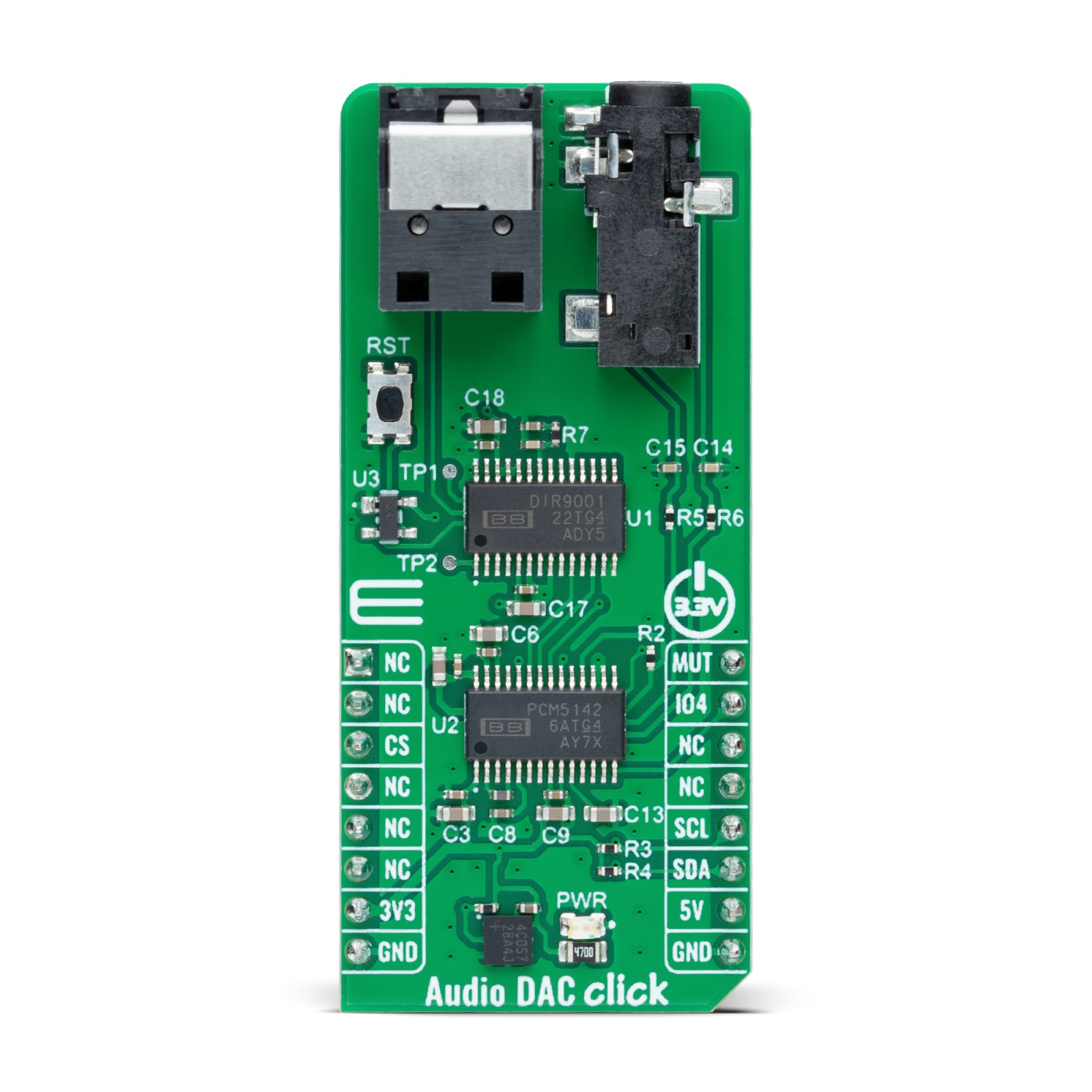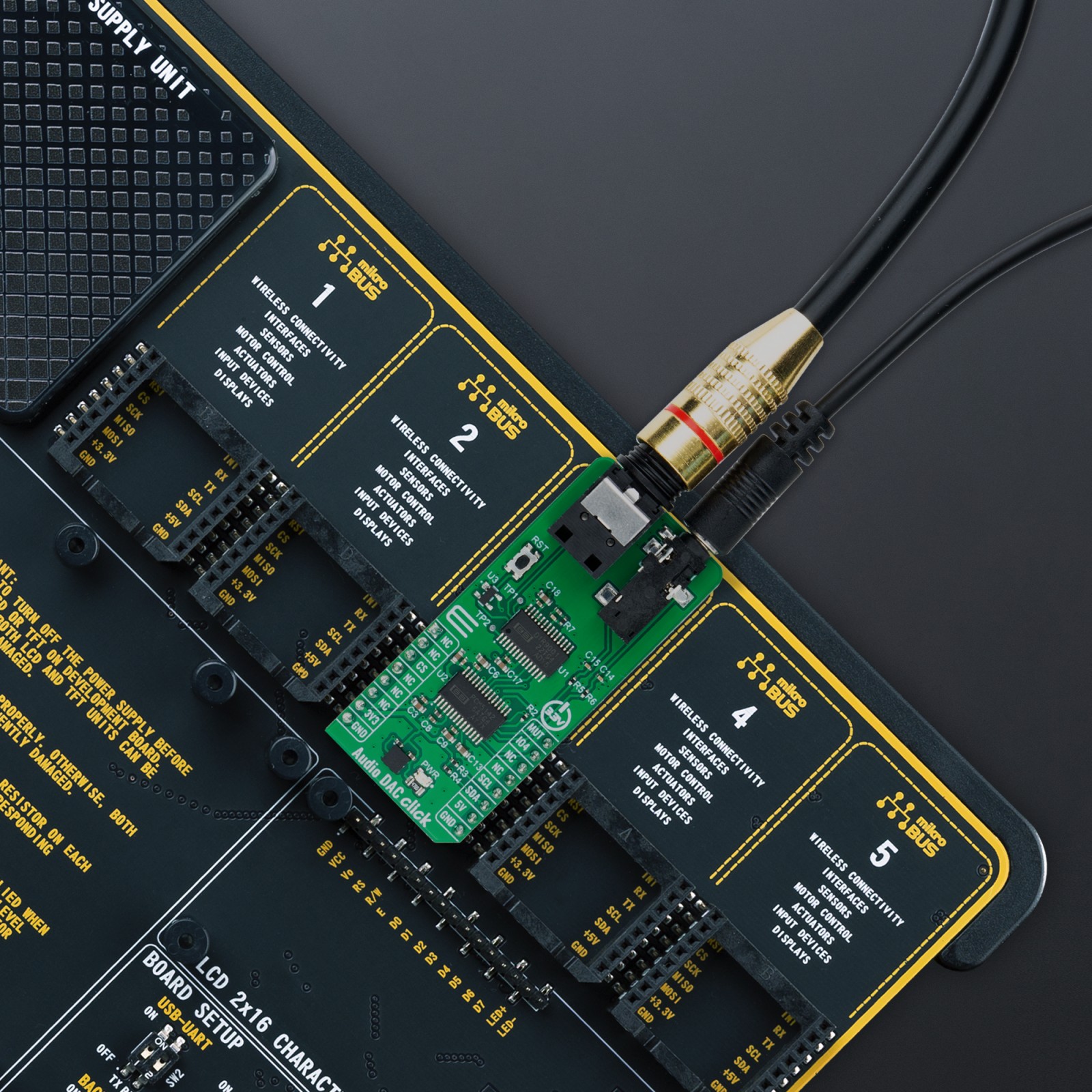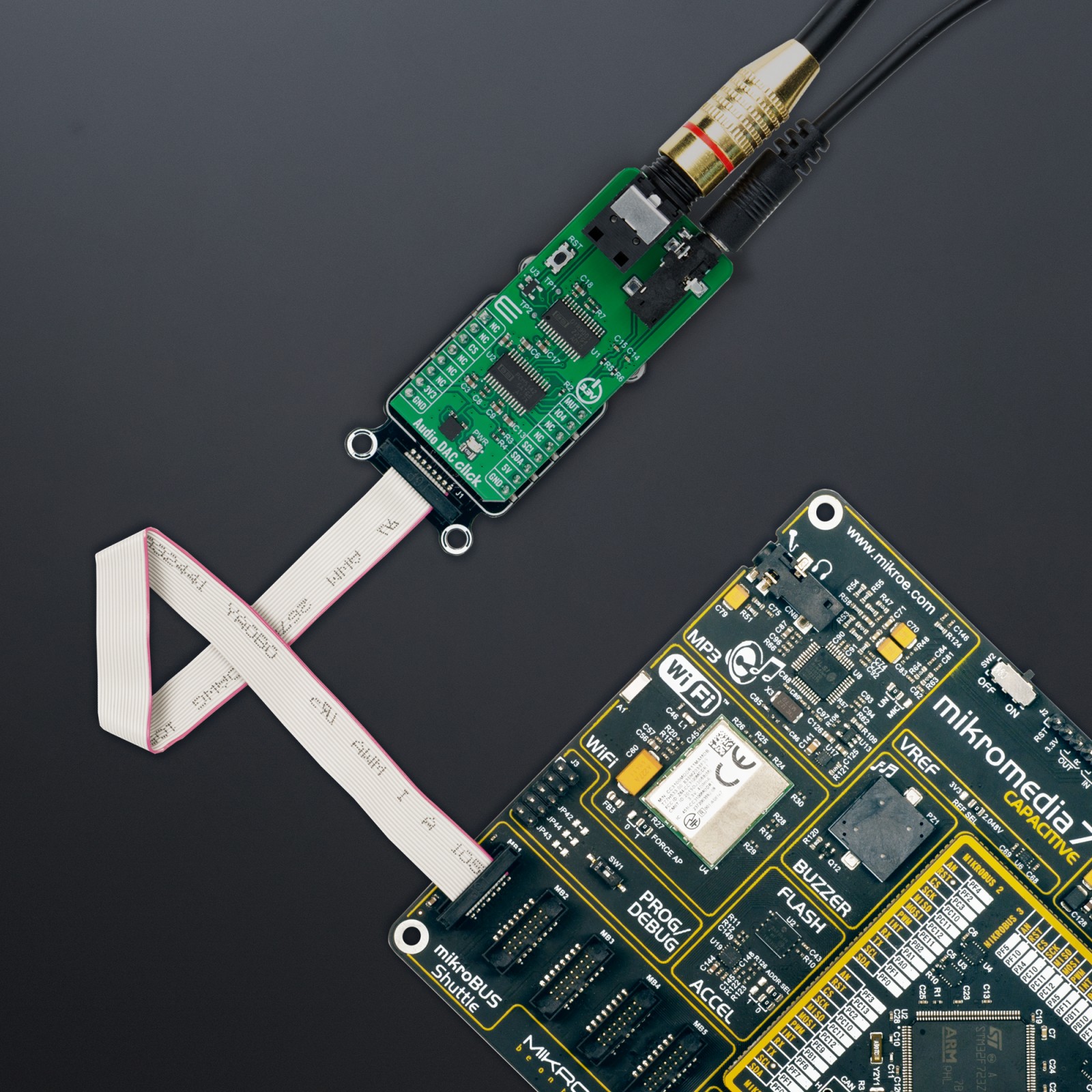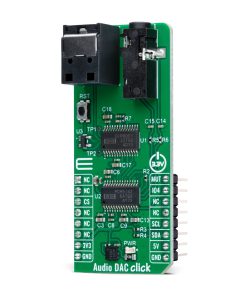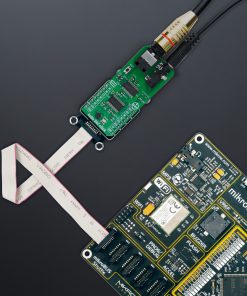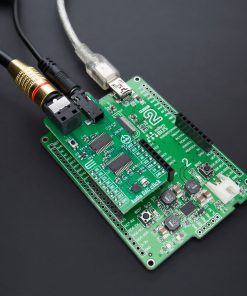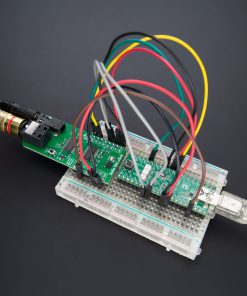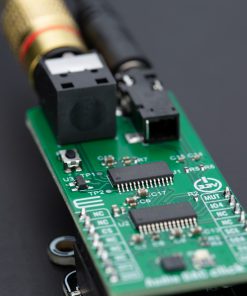Audio DAC Click
R1,050.00 ex. VAT
Audio DAC Click is a compact add-on board perfect for upgrading your audio equipment. This board features the PCM5142, a 32-bit 384kHz audio stereo DAC with the DIR9001 digital audio receiver from Texas Instruments. The DIR9001 can receive 24-bit/96kHz signals at the highest via S/PDIF optical cable and complies with various digital audio standards, like IEC60958-3, JEITA CPR-1205, AES3, and EBUtech3250. The DIR9001’s output is then processed via a stereo audio DAC, the PCM5142, with the latest generation of TI’s advanced segment-DAC architecture to achieve excellent dynamic performance, detailed heights, and an exceptionally good sound stage. This Click board™ is suitable for portable electronics and audio systems, representing a perfect solution for multimedia systems, satellite radio, CD and DVD players, and more.
Audio DAC Click is fully compatible with the mikroBUS™ socket and can be used on any host system supporting the mikroBUS™ standard. It comes with the mikroSDK open-source libraries, offering unparalleled flexibility for evaluation and customization. What sets this Click board™ apart is the groundbreaking ClickID feature, enabling your host system to seamlessly and automatically detect and identify this add-on board.
Stock: Lead-time applicable.
| 5+ | R997.50 |
| 10+ | R945.00 |
| 15+ | R892.50 |
| 20+ | R858.90 |

